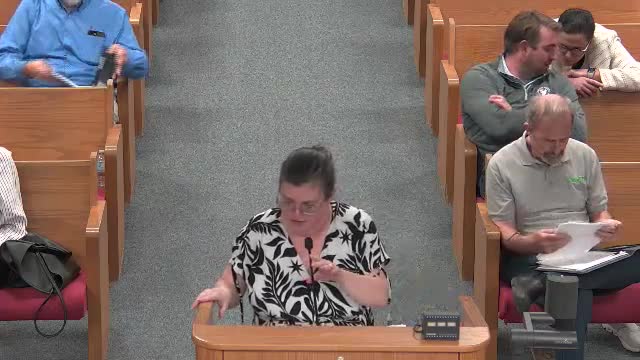Hernando staff outlines new buffer standards and AI-assisted plan checks to speed reviews and boost landscape performance
November 10, 2025 | Hernando County, Florida
This article was created by AI summarizing key points discussed. AI makes mistakes, so for full details and context, please refer to the video of the full meeting. Please report any errors so we can fix them. Report an error »

Planning staff and outside consultants told the Planning & Zoning Commission on Nov. 10 that Hernando County is launching a coordinated effort to standardize landscape-buffer requirements, add clear planting and opacity targets and introduce AI-assisted construction-drawing checks to make plan review faster and more predictable.
Planning manager Kay Griffith said the program grew from developer roundtables and a community survey that drew 198 responses. Staff proposed an ordered set of buffer "types" (A–G) that range from minimal screening along minor edges to high-opacity plantings for scenic corridors and sensitive residential adjacencies. Key technical targets included a 36-inch minimum shrub height at planting to achieve roughly 60% opacity at installation and a goal of 80% opacity within 12 months, backed by a maintenance-bond and inspection schedule.
Historic problems — including repeated re-submittals for missing plan elements, inconsistent buffer language, and disputes about whether a landscape or a structural screen was required — motivated two technology additions. Staff is piloting AI-assisted checks of civil construction drawings (to catch routine omissions such as missing north arrows, scales and signature blocks) and drone-assisted site verification for pre-construction condition surveys and buffer compliance checks. The tools are intended to reduce back-and-forth with applicants and to let staff count planting units and verify opacity more efficiently.
Commissioners broadly welcomed the direction but urged codifying clear setback and side-yard rules so developers and citizens have consistent expectations. Some commissioners also asked staff to make final guidance highly visual and public-facing to reduce confusion at hearings.
Next steps: Staff will continue developer roundtables, finalize a recommended buffer matrix and bring a code-rewrite package and draft ordinance language to the Board of County Commissioners for review. Cross-section requirements and a more prescriptive planting list are planned ahead of a 2026 implementation timeline.
Selected quote: "We want predictable reviews and clearer expectations — that lets residents and developers know what will be required before construction starts," Planning manager Kay Griffith said during the presentation.
Why it matters: The proposal aims to reduce repeated re-submittals, improve landscape survivability and give residents more reliable visual protection when new projects border housing or recreational areas.
Planning manager Kay Griffith said the program grew from developer roundtables and a community survey that drew 198 responses. Staff proposed an ordered set of buffer "types" (A–G) that range from minimal screening along minor edges to high-opacity plantings for scenic corridors and sensitive residential adjacencies. Key technical targets included a 36-inch minimum shrub height at planting to achieve roughly 60% opacity at installation and a goal of 80% opacity within 12 months, backed by a maintenance-bond and inspection schedule.
Historic problems — including repeated re-submittals for missing plan elements, inconsistent buffer language, and disputes about whether a landscape or a structural screen was required — motivated two technology additions. Staff is piloting AI-assisted checks of civil construction drawings (to catch routine omissions such as missing north arrows, scales and signature blocks) and drone-assisted site verification for pre-construction condition surveys and buffer compliance checks. The tools are intended to reduce back-and-forth with applicants and to let staff count planting units and verify opacity more efficiently.
Commissioners broadly welcomed the direction but urged codifying clear setback and side-yard rules so developers and citizens have consistent expectations. Some commissioners also asked staff to make final guidance highly visual and public-facing to reduce confusion at hearings.
Next steps: Staff will continue developer roundtables, finalize a recommended buffer matrix and bring a code-rewrite package and draft ordinance language to the Board of County Commissioners for review. Cross-section requirements and a more prescriptive planting list are planned ahead of a 2026 implementation timeline.
Selected quote: "We want predictable reviews and clearer expectations — that lets residents and developers know what will be required before construction starts," Planning manager Kay Griffith said during the presentation.
Why it matters: The proposal aims to reduce repeated re-submittals, improve landscape survivability and give residents more reliable visual protection when new projects border housing or recreational areas.
View full meeting
This article is based on a recent meeting—watch the full video and explore the complete transcript for deeper insights into the discussion.
View full meeting